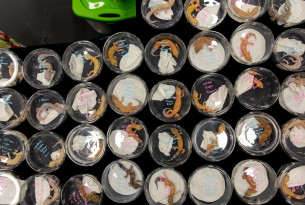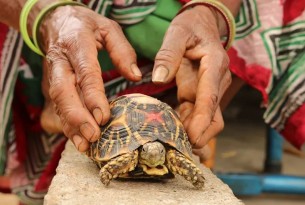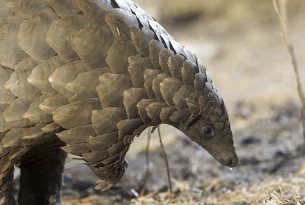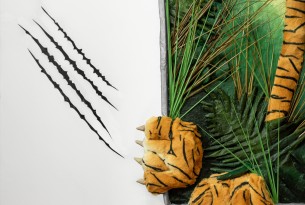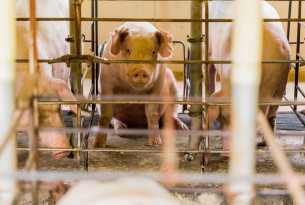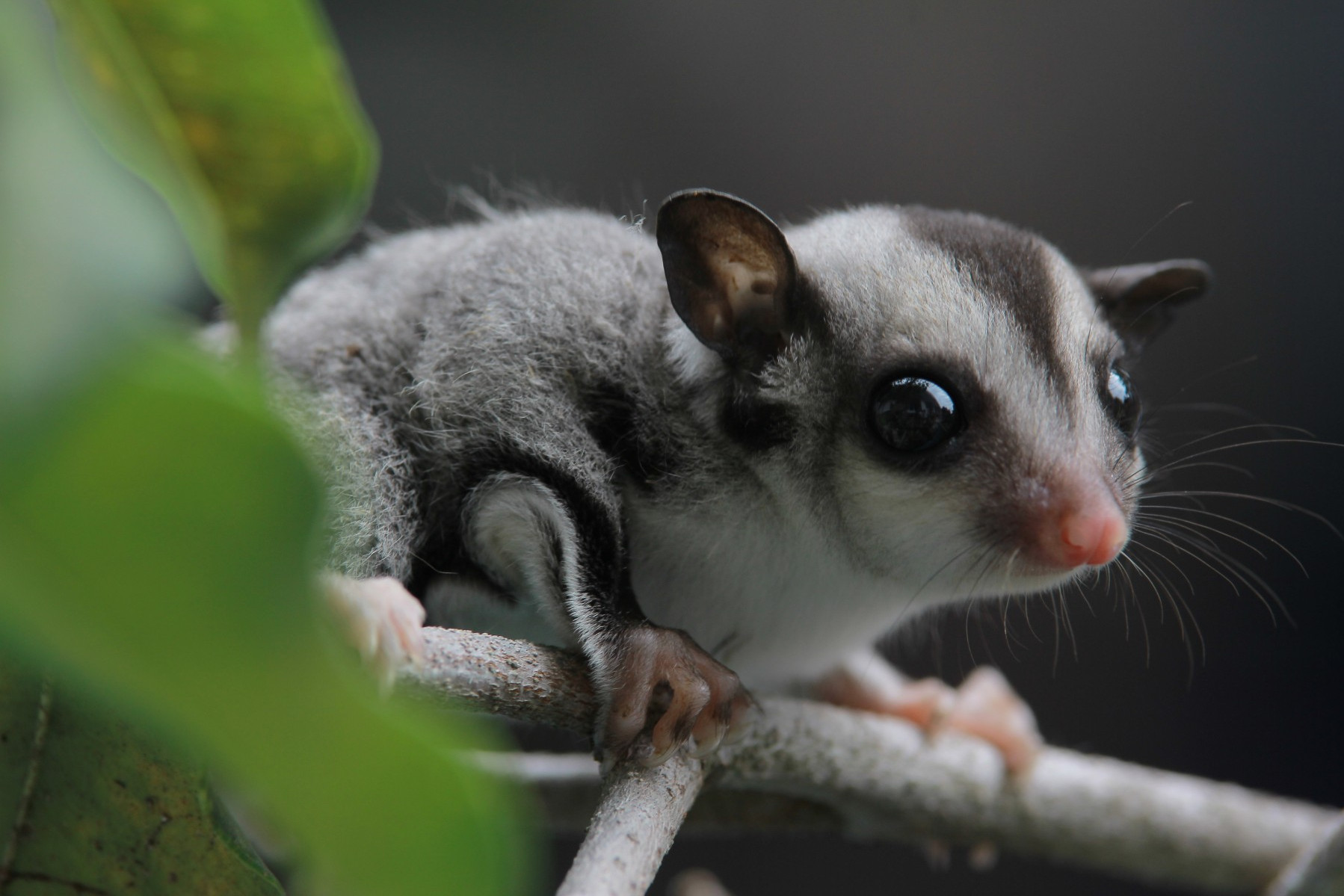
7 reasons we need to end the exotic pet trade
Wild animals are not domesticated, yet millions end up in people’s homes around the world each year.
While some animals in pet shops are not seen as “wild” because they’re readily sold, these animals continuously suffer in captivity for our companionship. Unlike dogs and cats, animals such as snakes, lizards, sugar gliders, and chinchillas are not domesticated and live in unsuitable captive environments.
Here are a few reasons to end the exotic pet trade.
African Gray Parrots are often poached from the wild.
African Gray Parrots are some of the world’s most trafficked animals. A 2019 World Animal Protection report found that wild African grey parrot populations have declined by as much as 99% in some areas. Poachers use cruel tactics including brutally chopping off flight feathers and cramming the animals into tight boxes to trap other parrots.
The exotic pet trade is both legal and illegal.
There are both legal and illegal aspects of the exotic pet trade. Some animals are intensely bred others are illegally poached from the wild.. But legality doesn’t matter; whether an animal is poached from the wild or born in captivity, legal to own or illegal – animal suffer at every stage of the exotic pet trade.
Some wild animals sold as pets carry diseases.
Reptiles shed the Salmonella bacteria from their intestinal tract and carry it on their skin or shells. Harmless to reptiles, Salmonella bacteria infections in humans can cause stomach cramps, fever, and diarrhea, or infections in the blood, urine, bones, and joints. Many people are treated without hospitalization, while others require it. Salmonella infections can even lead to death, especially in small children and the elderly. In December 2019, Public Health warned people about a Salmonella outbreak in Canada that likely originated from pet snakes and feeder rodents.
Turtles, snakes, geckos, bearded dragons, lizards, and other reptiles are wild animals who carry diseases, bacteria, and infections. Salmonellosis is just one of many zoonotic diseases, diseases that can jump from an animal to a human. These diseases place public health at risk.
Otters are taken from the wild as cubs after their parents are killed.
As the craze for keeping otters as pets or in cafes rises thanks to social media, so does the number of animals being poached from the wild. World Animal Protection’s investigative team was told that hunters will use dogs to smell out otter dens (known as holts). The fiercely protective parents are shot, electrocuted, or have their nests smoked out, so poachers can take their cubs.
Wild animals cannot have their basic needs met in captivity.
It is impossible to meet all the needs for a wild animal if that animal is not in the wild. In a home or an enclosure, there is no way to replicate the space and freedom these animals enjoy in the wild.
Many are kept in spaces drastically smaller than their natural habitats. This means they can’t perform normal behaviors. Often, the animals do not receive the correct nutrition, even if owners try their best to feed them properly.
African Gray Parrots often fly for miles every day but as pets they are locked in small cages for their entire lives. Reptiles are forced to live in small glass tanks and often do not get the proper nutrition required. Some wild animals sold in pet stores are nocturnal, with unknowing consumers purchasing an animal and disrupting sleep patterns. Big cats and primates are commonly left to suffer in backyard cages when they are too big and deemed dangerous. We should keep wild animals in the wild, where they belong.
Social media is fueling the exotic pet trade.
Parrots, turtles, lizards, snakes, fish, primates, big cats, and otters have all been subjected to the abuses of the exotic pet industry and social media depicts a false narrative of the ease of keeping them as pets rather than providing a realistic view. It can also connect buyers and sellers almost instantaneously, allowing wild animal to be purchased at the click of a button.
Social media has helped popularize the keeping of wild animals as pets. Animals like otters may look cute and cuddly when they are with their families, but they are not cats or dogs. They do not belong in human homes far away from their native habitats.
Sugar gliders do not make good pets, even when captive bred.
Even if wild animals are captive bred, it does not mean that they become domesticated. Sugar gliders, for example, are often bred in captivity but their needs can never be fully met.
In the wild, these animals live in large family groups and enjoy interacting and grooming with each other. These tree-dwelling marsupials are known to glide from tree to tree and have sharp claws, which can be uncomfortable or painful when interacting with humans. Sugar gliders are also nocturnal with daylight and loud noises in homes disrupting their sleeping patterns. And of course, being awakened at three am by a noisy Sugar glider exercising his natural nocturnal habits does not make for a good pet experience for the household.
Many exotic pet owners are unaware of the daily suffering their animals endure.
We know people often purchase exotic pets because they’re animal lovers. Animals bring joy to our lives, so it’s understandable that we’d want them to be part of our homes. We encourage everyone to appreciate and respect wild animals by keeping them where they belong – in the wild. We should only share our homes with domesticated animals who’ve evolved over thousands of years to be our companions, and whose needs can be completely met as pets.
Exotic pets can be dangerous.
Some exotic animals can be dangerous to their owners or people in the community. It can also be extremely dangerous for first responders, since there is little data available where dangerous animals are kept as pets. For example, in 2010, police responded to a noise complaint and ended up finding 5 snakes, including a venomous Gaboon viper.
Escapes and attacks, including fatal incidents, have happened and continue to happen throughout Canada. Stronger regulations and better enforcement are needed to protect animals and humans from these kind of incidents.
How can we protect wild animals?
Educating family and friends on why keeping wild animals as pets is cruel and pledging to never buy a wild animal is one of the best things you can do to help end the exotic pet trade. Additionally, you can take a stand on social media posts where people are interacting with wild animals or keep wild animals as pets!
Join our G20 campaign
The exotic pet trade is just one part of the multi-billion-dollar wild animal trade, where millions animals are shipped across the globe to be used for pets, food, traditional medicine and entertainment. The horrific conditions they face cause much suffering for every single animal involved. The trade can also be a risk to humans due to zoonotic diseases.
The wildlife trade is a global problem that requires a global solution to protect animals and humans. We are calling on the Canadian government to take steps to prevent the next pandemic through championing a global wildlife trade ban at the G20 meeting of world leaders in November and to curb the domestic trade in Canada. Sign the petition now:


